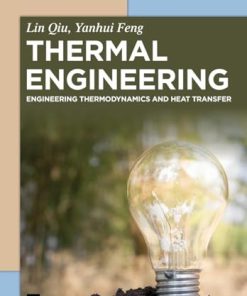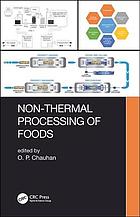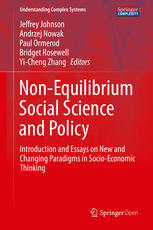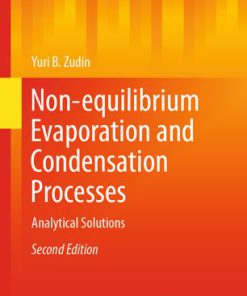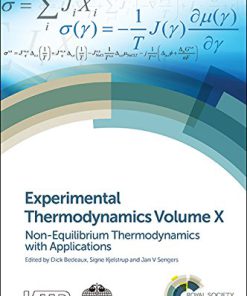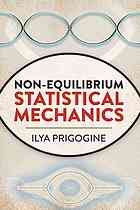Thermal Non Equilibrium in Heterogeneous Media 1st Edition by Marcelo De Lemos 9783319146652 3319146653
$50.00 Original price was: $50.00.$25.00Current price is: $25.00.
Thermal Non Equilibrium in Heterogeneous Media 1st Edition by Marcelo De Lemos – Ebook PDF Instant Download/Delivery:9783319146652,3319146653
Full dowload Thermal Non Equilibrium in Heterogeneous Media 1st Edition after payment
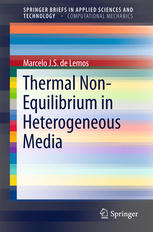
Product details:
ISBN 10:3319146653
ISBN 13:9783319146652
Author:Marcelo De Lemos
This book presents, in a self-contained fashion, a series of studies on flow and heat transfer in porous media, in which distinct energy balances are considered for the porous matrix and for the permeating fluid. Detailed mathematical modeling is presented considering both volume and time averaging operators simultaneously applied to the governing equations. System involving combustion in the gaseous phase, moving bed and double-diffusion mechanism are analyzed. Numerical results are presented for each case. In the end, this book contains the description of a tool that might benefit engineers in developing and designing more efficient thermal equipment.
Thermal Non Equilibrium in Heterogeneous Media 1st Table of contents:
1 Heterogeneous Media
1.1 Introduction
1.2 Outline of This Book
References
2 Modeling of Thermal Non-equilibrium
2.1 Introduction
2.2 Governing Equations
2.2.1 Local Instantaneous Transport Equations
2.2.2 Double-Decomposition of Variables
2.2.3 Macroscopic Flow Equations
2.2.4 Macroscopic Energy Equations
2.2.5 Correlations for Interfacial Heat Transfer, h_{i}
2.3 Periodic Cell
2.3.1 Numerical Method and Boundary Conditions
2.3.2 Film Coefficient Hi
2.3.3 A Correlation for Interstitial Heat Transfer
2.4 Laminar Flow in a Channel
2.4.1 Non-dimensional Parameters
2.4.2 Numerical Method and Boundary Conditions
2.4.3 Local Nusselt Numbers
2.5 Turbulent Flow in a Channel
2.6 Chapter Summary
References
3 Moving Systems
3.1 Introduction
3.2 Macroscopic Laminar Model for Fixed and Moving Beds
3.2.1 Fixed Bed
3.2.2 Moving Bed
3.3 Turbulence Model for Flow Equations
3.3.1 Fixed Bed
3.3.2 Moving Bed
3.4 Thermal Transport
3.4.1 Two-Energy Equation Model
3.4.2 Interfacial Heat Transfer Coefficient
3.4.3 Wall Treatment and Boundary Conditions
3.5 Results for Laminar Parallel Flow
3.5.1 Effect of Reynolds Number, {varvec {Re}_{ D}}
3.5.2 Effect of Slip Ratio, {varvec {u}_{ s} /{u}_{ D}}
3.5.3 Effect of Darcy Number, {varvec {Da}}
3.5.4 Effect of Porosity, {varvec { phi}}
3.5.5 Effect of Thermal Capacity Ratio {varvec (rho c_{p} )_{s} /(rho c_{p} )_{f}}
3.5.6 Effect of Thermal Conductivity Ratio {varvec k_{s} /k_{f}}
3.6 Results for Turbulent Parallel Flow
3.6.1 Effect of Reynolds Number, {varvec Re_{D}}
3.6.2 Effect of Slip Ratio, {varvec {u}_{ s} /{u}_{ D}}
3.6.3 Effect of Darcy Number, {varvec Da}
3.6.4 Effect of Porosity, {varvec phi}
3.7 Chapter Summary
References
4 Combustion Systems
4.1 Introduction
4.2 Porous Burners
4.3 Macroscopic Flow
4.3.1 Macroscopic Continuity Equation
4.3.2 Macroscopic Momentum Equation
4.3.3 Turbulence Modeling
4.4 Heat Transfer
4.4.1 Local Thermal Non-equilibrium Model (LTNE)
4.5 Combustion Modeling
4.5.1 Mass Transport for Fuel
4.5.2 Chemical Reaction
4.6 Heat Release
4.6.1 Double-Decomposition of Variables
4.6.2 Macroscopic Fuel Consumption
4.7 Numerical Results
4.7.1 Simulation Details and Boundary Conditions
4.7.2 Grid Independence Study
4.7.3 One Dimensional Combustor
4.8 Chapter Summary
References
5 Double Diffusion
5.1 Introduction
5.2 Mass Transport
5.3 Averaging Operators
5.4 Time Averaging for Buoyant Flows
5.5 Volume Averaging
5.5.1 Mean Continuity Equation
5.5.2 Mean Momentum Transport
5.5.3 Macroscopic Turbulence Field
5.6 Two-Energy Equation Model (2EEM)
5.6.1 Interfacial Heat Transfer, bf{h_{i}}
5.7 Mass Transport
5.8 Double-Diffusion Effects with a 2EEM Model
5.8.1 Mean Flow
5.8.2 Turbulent Field
5.9 Chapter Summary
References
6 Final Remarks
People also search for Thermal Non Equilibrium in Heterogeneous Media 1st:
thermal equilibrium in mri
non thermal equilibrium
thermodynamic non equilibrium
h2 thermal conductivity
is thermal equilibrium possible
Tags:
Marcelo De Lemos,Heterogeneous,Equilibrium,Thermal
You may also like…
Uncategorized
Technique - Food Manufacturing
Non-Thermal Processing of Foods Chauhan 113803584X 9781138035843
Science (General)
Non equilibrium Evaporation and Condensation Processes Analytical Solutions Yuri B. Zudin
Physics Physics - Mechanics
Engineering
Non equilibrium statistical mechanics 1st edition by Prigogine Ilya 0486815552 9780486815558
Medicine
Ecotoxicology and genotoxicology non traditional terrestrial models 1st Edition Marcelo L Larramendy




